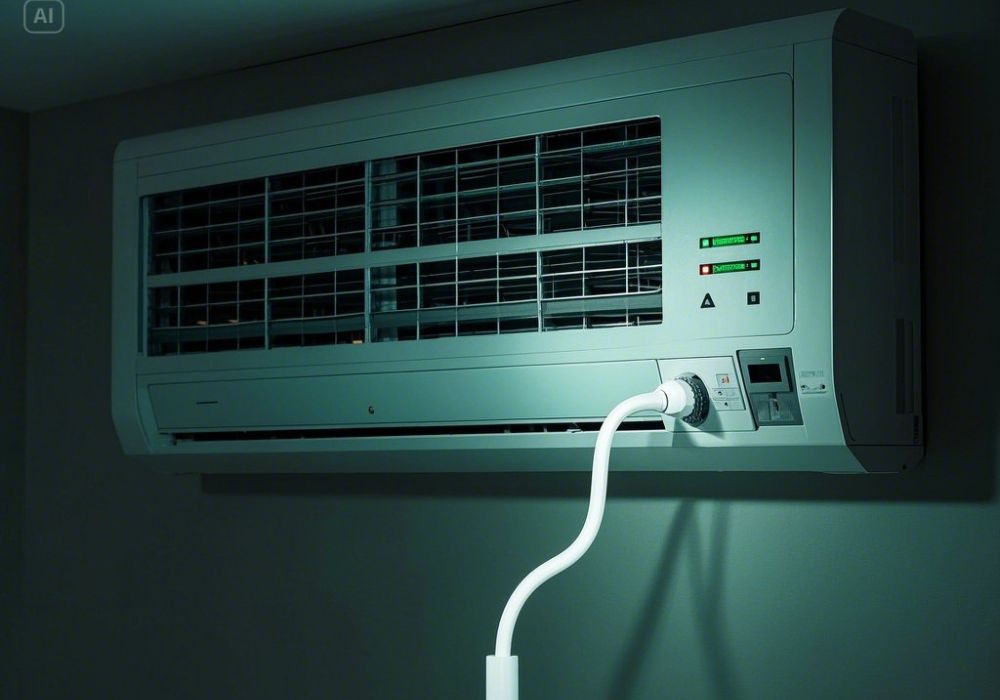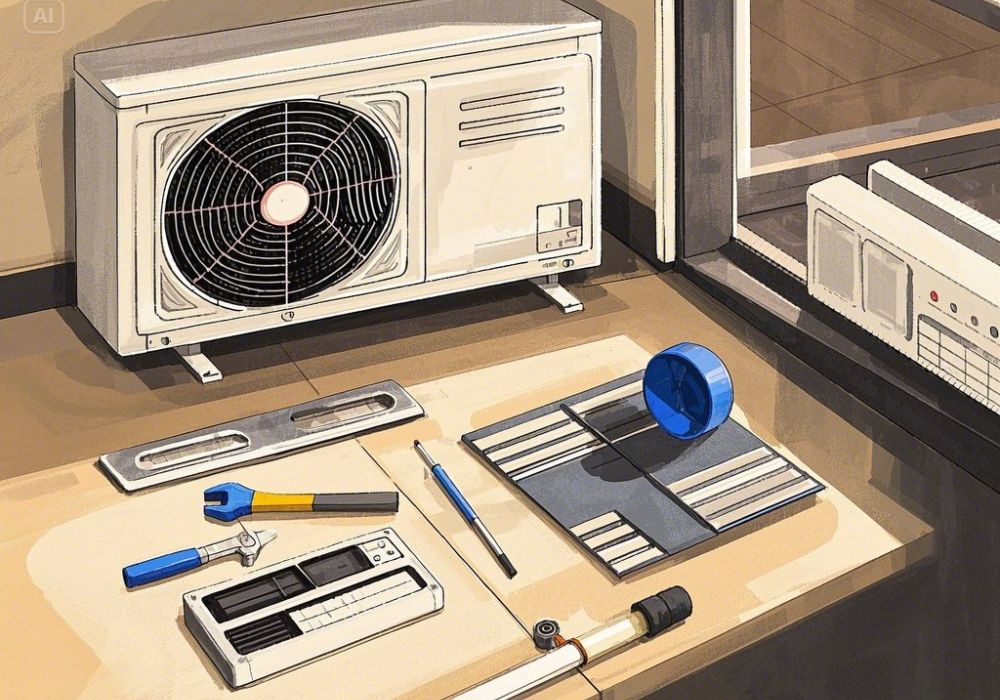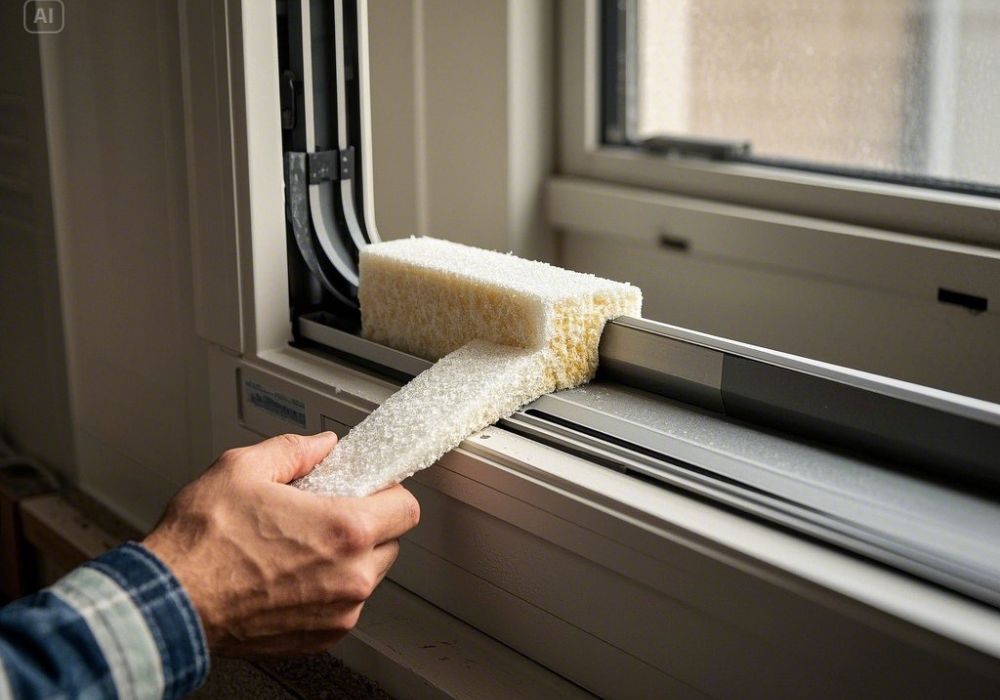Window air conditioners are a lifesaver in the summer heat, but if your unit isn’t sealed properly, you could be wasting energy and allowing cool air to escape. A well-sealed air conditioner not only improves efficiency but also helps keep out dust, insects, and unwanted drafts. Whether you’re a seasoned DIY enthusiast or just trying to make your home more comfortable, this comprehensive guide will show you how to seal around a window air conditioner the right way.
Why Sealing Your Window Air Conditioner Matters
Sealing your window air conditioner is important for several reasons. Here are some of the main benefits:
- Improved Energy Efficiency: An air conditioner that is properly sealed will operate more efficiently, meaning it will use less energy to cool your home. This can result in lower energy bills and a smaller carbon footprint.
- Better Comfort: A well-sealed air conditioner not only keeps cool air from escaping but also helps prevent hot outdoor air and humidity from entering your home. This means your living space will stay cooler and more comfortable.
- Cost Savings: By improving efficiency and reducing energy usage, sealing your window air conditioner can save you money in the long run. Plus, if you properly maintain and seal your AC unit, it can extend its lifespan and postpone the need for costly repairs or replacements.
- Environmental Benefits: As mentioned earlier, sealing your window air conditioner reduces energy consumption, which in turn helps reduce carbon emissions. By making small changes to our daily habits, we can all contribute to a more sustainable future.
- Improved Air Quality: A well-sealed air conditioner not only keeps cool air inside but also prevents outdoor pollutants from entering your home. This results in improved indoor air quality and a healthier living environment for you and your family.
- Less Noise Pollution: A poorly sealed window air conditioner can be noisy due to the gaps that allow outside noise to enter. By properly sealing your air conditioner, you can reduce noise pollution and create a more peaceful living space.
- Energy Savings: A well-sealed air conditioner is more energy-efficient as it prevents cool air from escaping. This means that your unit will not have to work as hard to maintain the desired temperature, resulting in lower electricity bills and reduced carbon emissions.
- Longer Lifespan of Your Air Conditioner: Properly maintaining and sealing your air conditioner can extend its lifespan. Regular maintenance and proper sealing can prevent wear and tear on the unit, ensuring it runs efficiently for longer periods.
- Contributes to a Sustainable Future: By properly sealing your air conditioner, you are not only saving money and energy, but you are also contributing to a more sustainable future. By reducing your carbon footprint, you are helping to combat climate change and create a healthier environment for all.
- Less Chance of Costly Repairs: Neglecting to seal your air conditioner properly can lead to costly repairs down the line. By regularly maintaining and sealing your unit, you can catch any potential issues early on before they become major problems that require expensive repairs.
- Improves Indoor Air Quality: Proper sealing of your air conditioner helps prevent outside pollutants from entering your home. This is especially important for those with respiratory issues or allergies as it can improve indoor air quality and make breathing easier.
- Increases Overall Efficiency: When your air conditioner is properly sealed, it can operate at peak efficiency. This means it will use less energy and save you money on your utility bills.
- Extends Lifespan of Unit: Regularly maintaining and sealing your air conditioner can also extend its lifespan. By preventing dust, dirt, and other particles from entering the unit, you reduce wear and tear on the internal components, which can help prolong its overall lifespan.
- Protects Against Weather Elements: Sealing your air conditioner also helps protect it from damage caused by weather elements such as rain, snow, hail, or strong winds. These weather factors can cause debris to enter the unit and potentially damage the internal components, leading to costly repairs or replacements. A properly sealed air conditioner can also help maintain its energy efficiency during extreme weather conditions.
- Improves Indoor Air Quality: By preventing dust and debris from entering your air conditioner, you are also improving the overall indoor air quality of your home. When dirt and pollutants build up in your AC unit, they can be circulated back into the air you breathe, potentially causing respiratory issues and allergies. Sealing your air conditioner helps keep these irritants out, allowing for cleaner and healthier air inside your home.
- Reduces Energy Costs: As mentioned earlier, a properly sealed air conditioner can help improve its energy efficiency. By keeping outside elements out, the unit can run more efficiently and use less energy to cool your home. This can lead to cost savings on your monthly utility bills.
- Extends Lifespan of AC Unit: Sealing your air conditioner can also help extend its lifespan. When dirt, debris, and moisture enter the unit, it can cause corrosion and damage over time. By sealing it properly, you are preventing these elements from entering and causing potential damage, thus increasing the longevity of your AC unit.
- Increases Comfort and Performance: A sealed air conditioner will not only improve the overall indoor air quality but also ensure that your home stays comfortable during the hot summer months. Without any outside elements affecting its performance, the AC unit can cool your home more efficiently and effectively.
- Reduces Energy Costs: A properly sealed air conditioner will also help in reducing energy costs. When your AC unit is working at its optimal level, it consumes less energy, which results in lower utility bills. In addition, a well-sealed system ensures that there are no air leaks, preventing the loss of cool air and making sure that your home stays consistently cool without any strain on the unit.
- Preserves Warranty: Most AC manufacturers have warranty clauses stating that any damage caused by external elements or improper maintenance may void the warranty. By sealing your air conditioner, you are taking proactive steps to protect your investment and ensure that the warranty remains valid.
Before we get to the step-by-step instructions, it’s important to understand why sealing your air conditioner is so crucial.
Benefits of Proper Sealing

- Energy Efficiency: Gaps around your air conditioner can lead to significant energy loss, driving up utility bills. Sealing prevents cool air from escaping and warm air from sneaking in.
- Improved Comfort: With better sealing, your space stays consistently cool without those annoying warm spots.
- Protection Against Pests: Proper sealing keeps insects, bugs, and even small critters from finding their way into your home.
- Noise Reduction: A sealed unit dampens outside noise, making your space quieter and more relaxing.
Tools and Materials You’ll Need
Gathering the right tools and materials before you start will make the process much smoother. Here’s what you’ll need:
- Foam insulation strips
- Weatherstripping tape
- Caulk and a caulk gun
- Scissors or a utility knife
- Measuring tape
- Screwdriver
- A clean cloth or sponge
Bonus Tip
When shopping for materials, look for weather-resistant options to ensure your seals stand up to rain and temperature changes.
Step-by-Step Guide to Sealing Around a Window Air Conditioner

Follow these simple steps to seal your window air conditioner like a pro.
Step 1: Clean the Window Frame
Start by thoroughly cleaning the area around the window. Use a damp cloth or sponge to remove dust, dirt, and debris from the frame. This ensures any adhesive materials, like weatherstripping or caulk, stick properly.
Step 2: Inspect for Gaps
Carefully examine the space around the air conditioner. Pay attention to visible gaps and openings between the unit and the window frame. Use a flashlight to spot even small cracks that might not be immediately visible.
Step 3: Apply Foam Insulation Strips
Foam insulation strips are your first line of defense against air leaks.
- Measure the gaps around the air conditioner.
- Cut the foam strips to size using scissors or a utility knife.
- Peel off the adhesive backing and press the foam strips firmly into the gaps.
Step 4: Use Weatherstripping Tape
For additional protection, apply weatherstripping tape along the edges where the air conditioner meets the window. This tape offers a snug seal and is ideal for covering narrow gaps. Ensure you press it down firmly for a long-lasting hold.
Step 5: Seal with Caulk
Caulking is one of the most effective ways to close any remaining gaps.
- Load the caulk into a caulk gun.
- Apply a thin, even bead of caulk along the gaps.
- Use your finger or a caulk-smoothing tool to ensure a neat finish.
- Allow the caulk to dry as per the manufacturer’s instructions.
Pro Tip: Opt for clear or paintable caulk so it blends seamlessly with your window and air conditioner.
Step 6: Check the Side Panels
Most window air conditioners come with accordion-style side panels to fill the space between the unit and the window frame. These panels are notorious for being a weak point in sealing.
- Ensure the panels are fully extended and secure.
- Use weatherstripping or foam tape to seal the edges of the panels for added insulation.
Step 7: Test for Air Leaks
Once everything is sealed, test your work by feeling around the edges for any cool air escaping. A lit incense stick or a small piece of tissue can help you detect minor air leaks by watching for movement caused by escaping air.
Additional Tips for Long-Term Maintenance
- Inspect Regularly: Check the seal around your air conditioner at least once a year, especially at the start of the cooling season.
- Replace Worn-Out Materials: Foam strips and weatherstripping can wear out over time. Replace them as needed to maintain an effective seal.
- Protect Against Weather: Use a weatherproof cover during the off-season to prevent damage and extend the life of your unit.
Frequently Asked Questions
1. How do I know if my window air conditioner is leaking air?
You can use your hand to feel the drafts around the edges of the unit. Alternatively, hold a lit incense stick near the gaps and watch for smoke that indicates air movement.
2. Can I use duct tape for sealing?
While duct tape might work temporarily, it’s not a durable solution. Over time, it loses adhesion and can leave a sticky residue. Use weatherstripping or foam tape instead for a more permanent fix.
3. Are foam insulation strips weather-resistant?
Most foam strips are designed to handle moderate weather conditions, but it’s always a good idea to check the product label for specifics. For exposed areas, consider using weather-resistant materials.
Seal It Right for a Cooler Space
A properly sealed window air conditioner does more than keep your room cool. It reduces energy costs, enhances comfort, and protects your home from pests and noise. Plus, it’s a straightforward DIY project that anyone can do with the right materials and a little bit of time.
If you follow these steps, your air conditioner will work more efficiently, and you’ll notice the difference in both your energy bill and comfort level.
Conclusion
Sealing your window air conditioner is a simple yet impactful way to improve your home’s comfort and energy efficiency. By taking the time to follow the proper steps and use quality sealing materials, you can enjoy a cooler space, lower energy costs, and additional benefits like reduced noise and pest prevention. A well-sealed air conditioner ensures that you get the most out of your cooling system, making it a worthwhile investment in your home’s comfort and savings. Make the change today and feel the difference!
Have questions or want to share your sealing successes? Drop your comments below and join the conversation!











